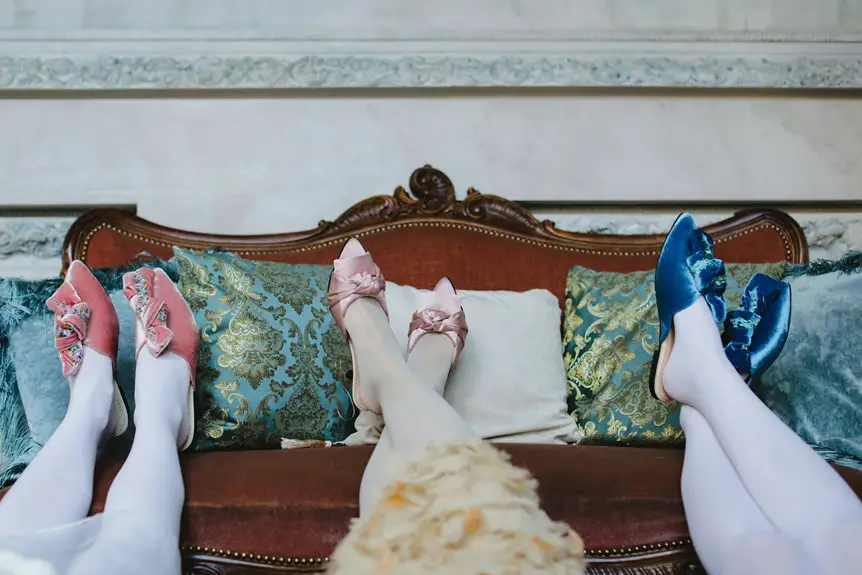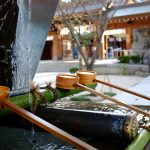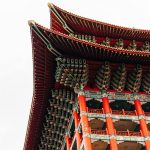You’ll find that Thai Ikat, or Mudmee silk, is a stunning textile art that uses a resist-dyeing technique to create intricate, blurred patterns on soft silk threads. Rooted in northern Thailand, it holds deep cultural meaning, symbolizing protection and prosperity. Artisan weavers carefully tie, dye, and align threads to craft each unique piece, prized for traditional ceremonies and modern fashion alike. Explore further to uncover its rich heritage, symbolism, and care tips.
Table of Contents
Key Takeaways
- Thai Ikat, or Mudmee silk, is a traditional textile from northern and northeastern Thailand, symbolizing cultural identity and heritage.
- The Mudmee silk technique involves resist dyeing tied silk threads, creating distinctive blurred patterns and vibrant colors.
- Traditional patterns in Mudmee silk carry symbolic meanings like protection, prosperity, and renewal through motifs such as flowers and diamonds.
- Crafting Mudmee silk includes selecting silk threads, tying sections to resist dye, repeated dyeing, drying, and precise weaving.
- Authentic Mudmee silk is used in fashion, interior design, and ceremonies, with care involving gentle hand washing and avoiding direct sunlight.
History and Origins of Thai Ikat
Thai Ikat, also known as Mudmee silk, has a rich history that dates back centuries. You’ll find its roots deeply embedded in northern and northeastern Thailand, where skilled artisans created stunning textiles for local use and trade.
This art form reflects cultural identity and social status, passed down through generations. When you explore Mudmee silk’s history, you’ll see how communities valued this craft not just for beauty but also for its symbolic meanings in rituals and ceremonies.
The intricate patterns you admire today connect you to a legacy of tradition and innovation. As you appreciate Thai Ikat, remember it’s more than fabric—it’s a vibrant story woven into every thread, shaped by time and the hands of dedicated weavers.
Understanding the Mudmee Silk Technique
To master Mudmee silk, you start with a resist dyeing process that carefully protects sections of the threads before dyeing.
You’ll also need to pay close attention to pattern alignment techniques to guarantee the design matches perfectly once woven.
These steps are what make Mudmee silk truly unique and intricate.
Resist Dyeing Process
Although the Mudmee silk technique might seem complex, you’ll find that its resist dyeing process relies on a clever method of binding threads before dyeing.
You start by tightly tying sections of the silk threads with resilient materials, like cotton or rubber bands. These bindings prevent dye from reaching certain areas, creating crisp, intricate patterns once the threads are dyed.
After tying, you dip the threads into dye baths, sometimes repeating the process with different colors to add depth.
Once the dyeing is complete, you carefully remove the bindings, revealing the distinctive blurred edges characteristic of Mudmee silk.
This technique demands patience and precision, but it’s what gives Mudmee its unique beauty and vibrant, multi-hued designs that you’ll appreciate in every piece.
Pattern Alignment Techniques
Mastering pattern alignment is key to creating the stunning designs Mudmee silk is known for. When you prepare the threads, you must carefully plan how each dyed section will match up once woven.
Aligning patterns requires precision; even a slight misplacement can distort the intricate motifs. You’ll start by marking reference points on the warp threads before dyeing, ensuring each color band corresponds exactly to the desired design segment.
During weaving, constantly check these markers to keep patterns symmetrical and continuous across the fabric. This technique demands patience and a steady hand, but it’s essential to achieve the crisp, vibrant look that defines authentic Mudmee silk.
Materials Used in Mudmee Silk Weaving
The charm of Mudmee silk starts with the materials artisans choose.
The charm of Mudmee silk begins with the carefully chosen materials that bring its beauty to life.
When you explore Mudmee weaving, you’ll notice three essential materials that shape its unique texture and brilliance:
- Silk threads – These are the backbone, prized for their softness and natural sheen, giving Mudmee silk its luxurious feel.
- Natural dyes – Extracted from plants and minerals, these dyes provide vibrant, lasting colors that tell a story of tradition and environment.
- Resist bindings – Cotton or hemp threads tightly wrapped around silk yarns before dyeing create the ikat’s signature patterns by preventing dye absorption in specific areas.
Together, these materials empower artisans to craft intricate patterns with depth and durability, connecting you directly to Thailand’s rich textile heritage.
Traditional Patterns and Symbolism
Patterns in Mudmee silk do more than decorate—they tell stories. When you explore these textiles, you’ll notice geometric shapes, animals, and natural elements woven carefully into each design.
Each motif carries deep meaning, representing values like protection, fertility, or prosperity. For example, the “dok hang” flower symbolizes hope and renewal, while intricate diamond shapes often stand for good fortune.
As you wear or appreciate Mudmee silk, you connect with centuries of tradition and cultural identity. The patterns aren’t random; they’re deliberate messages from the weavers, passed down through generations.
Understanding these symbols helps you see Mudmee silk not just as fabric, but as a vibrant language expressing Thai heritage and beliefs through art.
The Role of Thai Ikat in Cultural Ceremonies
When you see Thai Ikat in cultural ceremonies, you’re witnessing more than just beautiful fabric—it carries deep symbolism tied to rituals.
You’ll notice that traditional ceremony attire often features Mudmee silk, reflecting respect and heritage.
Understanding this connection helps you appreciate how Thai Ikat plays an essential role in honoring cultural traditions.
Symbolism in Rituals
Ceremonial occasions in Thailand come alive with the vibrant presence of Thai Ikat, known locally as Mudmee silk. When you see Mudmee silk in rituals, it’s not just fabric—it’s a symbol carrying deep meanings.
You’ll notice these key elements:
- Protection: The intricate patterns are believed to ward off evil spirits, keeping participants safe.
- Prosperity: Colors and designs often signify blessings for wealth and good fortune.
- Identity: Wearing Mudmee silk connects you to your community’s heritage, showing respect for ancestors.
Understanding these symbols lets you appreciate how Mudmee silk elevates rituals beyond tradition. It binds spirituality, culture, and identity, making each ceremony a living story woven into every thread.
Traditional Ceremony Attire
Mudmee silk doesn’t just carry meaning in rituals; it also shapes the very clothes worn during Thailand’s cultural ceremonies. When you put on traditional attire woven with Thai Ikat, you’re embracing centuries of heritage. The intricate patterns and vibrant colors tell stories of your community, status, and occasion. Whether it’s weddings, festivals, or royal events, Mudmee silk elevates your presence with elegance and symbolism.
| Ceremony Type | Ikat Attire Features |
|---|---|
| Wedding | Bright colors, intricate motifs |
| Buddhist Festival | Subtle hues, spiritual patterns |
| Royal Event | Luxurious silk, gold-threaded |
| Harvest Festival | Earth tones, nature-inspired |
| Coming-of-Age | Bold designs, celebratory symbols |
Wearing Mudmee silk connects you to tradition, making each ceremony truly special.
Regional Variations in Thai Ikat Designs
Although Thai Ikat shares common techniques, you’ll notice distinct regional variations that reflect local culture and environment. Each area adds its own flavor to the patterns, colors, and motifs, giving you a unique glimpse into local traditions.
Here’s what you should look out for:
- Northeastern (Isan) Ikat features bold geometric shapes and earthy tones, mirroring the rural landscape and tribal heritage.
- Northern Ikat often incorporates intricate, delicate designs inspired by nature and Buddhist symbolism, reflecting the region’s spiritual focus.
- Central Thai Ikat uses brighter colors and more symmetrical patterns, representing the influence of royal courts and urban culture.
Knowing these differences helps you appreciate the rich diversity embedded in Mudmee silk, making each piece a story of its own.
How Mudmee Silk Is Made Step-By-Step
Understanding the regional styles gives you a deeper appreciation for the craftsmanship behind each piece. Making Mudmee silk involves a meticulous process that you’ll find both fascinating and rewarding. You begin by selecting high-quality silk threads, then carefully tie sections with a waxed thread to resist dye. Next, you dip the threads into dye baths, repeating the tying and dyeing to create intricate patterns. After drying, you remove the ties and weave the threads into fabric, revealing the unique design.
| Step | Emotion Evoked |
|---|---|
| Selecting silk | Anticipation |
| Tying threads | Focus |
| Dyeing | Excitement |
| Drying | Patience |
| Weaving | Pride and joy |
Contemporary Uses of Thai Ikat Fabric
You’ll find Thai Ikat fabric woven into everything from modern fashion to home décor, blending traditional craftsmanship with contemporary style.
When you choose Mudmee silk, you’re embracing a piece of heritage that’s both functional and artistic.
Here are three exciting ways you can incorporate this fabric into your life:
- Fashion: Designers use Thai Ikat to create vibrant scarves, dresses, and accessories that stand out with unique patterns.
- Interior Design: You can add throw pillows, curtains, or wall hangings featuring Mudmee silk to infuse spaces with cultural elegance.
- Special Occasions: Traditional garments made from Thai Ikat elevate ceremonies, while modern adaptations offer chic options for events.
Caring for and Preserving Mudmee Silk
Bringing Thai Ikat fabric into your wardrobe or home means you’ll want to keep its colors vibrant and fibers strong.
Always hand wash Mudmee silk gently in cold water with mild detergent to avoid damage. Avoid wringing or twisting; instead, press out water softly and lay flat to dry in shade to prevent fading.
Hand wash Mudmee silk gently in cold water with mild detergent, press out water softly, and dry flat in shade.
When ironing, use a low heat setting and place a cloth between the iron and fabric.
Store your Mudmee silk away from direct sunlight and moisture, preferably folded in breathable cotton bags. Avoid hanging it for long periods to prevent distortion.
Where to Find Authentic Thai Ikat Today
Finding authentic Thai Ikat, also known as Mudmee silk, requires knowing where to look both in Thailand and internationally. To guarantee you get genuine pieces, consider these options:
- Local Markets and Villages: Visit northeastern Thailand, especially in Surin and Sisaket provinces, where skilled weavers produce traditional Mudmee silk.
- Specialty Boutiques in Bangkok: Shops like Jim Thompson’s flagship store offer high-quality, authentic Mudmee textiles sourced directly from artisans.
- Online Platforms: Trusted websites and platforms focused on fair trade and handmade goods often feature verified Mudmee silk products, allowing you to shop globally while supporting weavers.
Frequently Asked Questions
Can I Dye Mudmee Silk at Home Without Special Equipment?
You can dye Mudmee silk at home, but achieving traditional Mudmee patterns requires resist techniques and precise tying. Without special tools, you might experiment with simple dyeing, but authentic results need experience and equipment.
Is Thai Ikat Fabric Suitable for Summer Clothing?
Imagine a cool breeze brushing through vibrant patterns—Thai ikat fabric breathes well, making it perfect for summer clothing. You’ll stay comfortable and stylish, thanks to its lightweight, breathable qualities that handle heat with grace.
Are There Eco-Friendly Alternatives to Traditional Mudmee Silk Dyes?
You can choose eco-friendly natural dyes made from plants, fruits, and minerals instead of traditional synthetic ones. These alternatives reduce environmental impact while keeping vibrant colors, making your mudmee silk more sustainable and kind to the planet.
How Long Does It Take to Weave One Mudmee Silk Garment?
Imagine patience woven into every thread—you’ll spend weeks crafting one Mudmee silk garment. The intricate dyeing and weaving process can take from two to six weeks, depending on complexity and skill, making each piece truly unique.
Can Mudmee Silk Be Machine Washed Safely?
You shouldn’t machine wash Mudmee silk because the delicate fibers and vibrant dyes can get damaged. Instead, hand wash it gently in cold water or opt for professional dry cleaning to keep your garment looking beautiful.
- A Guide to Clarke & Clarke Ikat Fabrics - June 28, 2025
- Brown Ikat Fabric: An Earthy and Grounding Choice for Decor - June 28, 2025
- The Significance of Ikat in Traditional Ceremonies - June 28, 2025





